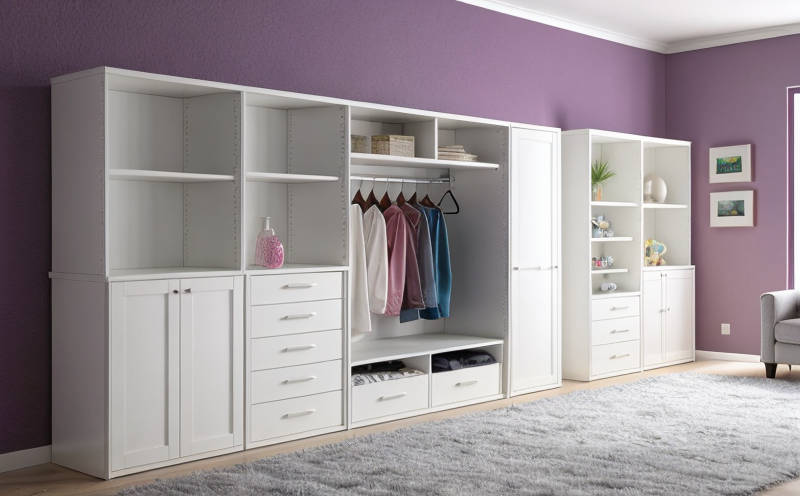DIN EN 16122 Storage Units Test Methods for Mechanical Durability Testing
The DIN EN 16122 standard is specifically designed to assess the mechanical durability of storage units. This involves a series of tests that simulate real-world conditions under which these units are expected to operate, ensuring their structural integrity and usability over time. Storage furniture includes items such as filing cabinets, office desks with drawers, and wardrobes, all of which rely on their mechanical stability for prolonged performance.
The standard specifies various test methods aimed at evaluating the resistance of storage units to forces that may cause damage or failure during normal use. These tests are conducted using standardized procedures that ensure consistency across different manufacturers and regions. The primary objective is to provide a reliable evaluation of the strength, durability, and quality of storage furniture.
One of the key aspects of DIN EN 16122 involves the application of load to the drawers or doors of the storage unit. This test assesses how well the hardware (such as hinges and locks) withstands repeated opening and closing. Another critical factor is the resistance against impact forces, which can occur due to accidental collisions during daily use.
The standard also includes tests for static loads, where weight distribution across different compartments of the storage unit is evaluated under defined conditions. This ensures that even when fully loaded, the furniture does not show signs of deformation or instability. Additionally, there are tests aimed at evaluating the flexibility and resilience of materials used in the construction of these units.
For quality managers and compliance officers, understanding DIN EN 16122 is crucial for ensuring that products meet industry standards and customer expectations. R&D engineers will find this standard invaluable as it provides a framework for developing new designs that are robust yet aesthetically pleasing. In terms of procurement, this standard serves as a benchmark to ensure the reliability of suppliers.
The tests outlined in DIN EN 16122 are not only about ensuring physical strength but also about enhancing safety and user experience. By adhering to these standards, manufacturers can build trust with their customers, knowing that their products have been rigorously tested for durability and performance.
Applied Standards
DIN EN 16122 is part of a broader family of standards focused on furniture testing. It draws upon several other international standards such as ISO 7243 for general principles and methods for wood furniture, and ASTM D5809 for evaluating the strength properties of flexible materials used in furniture.
The standard incorporates elements from these sources to provide a comprehensive approach to mechanical durability testing. By referencing established practices, DIN EN 16122 ensures that it aligns with global best practices while being tailored specifically to storage units.
Industry Applications
- Filing Cabinets: Ensures the drawer mechanisms are reliable and secure over extended use.
- Office Desks: Evaluates the stability of drawers and the resistance to heavy loads.
- Wardrobes: Tests the structural integrity under static load conditions.
- Storage Bins: Checks for resilience against repeated loading and unloading.
The mechanical durability tests are particularly important in industries like office furniture, healthcare facilities, schools, and libraries where storage units need to be robust enough to withstand frequent use by multiple users over extended periods. In manufacturing settings, these tests ensure the quality of components used in production lines that require high levels of precision and reliability.
International Acceptance and Recognition
DIN EN 16122 is recognized internationally for its comprehensive approach to mechanical durability testing. It has been adopted by numerous organizations worldwide as a standard practice in the furniture industry. Compliance with this standard enhances the reputation of manufacturers globally, making it easier to export products into markets that prioritize quality and safety.
Adherence to DIN EN 16122 also provides an opportunity for businesses to participate in international trade exhibitions and conferences where compliance is often a prerequisite for participation. This not only broadens market access but also fosters collaboration between local and foreign entities, promoting innovation and technological advancement within the industry.





